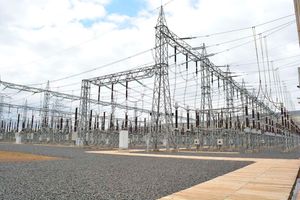Premium
Expensive thermal power output hits 11-month high

A geothermal power generating plant in Olkaria, Naivasha.
The generation of expensive thermal electricity hit an 11-month high in February as the country rushed to fill the deficit caused by reduced hydropower generation due to drought.
Latest data from the Kenya National Bureau of Statistics (KNBS) shows thermal power generation increased by 33 per cent to 142.35 million units up from 107.32 million units generated in January.
It is the highest amount of power generated from thermal sources since March 2022 when some 170.16 million units of electricity were produced from thermal sources.
February saw power generation from all sources drop except for thermal amid reduced demand for power owing to a challenging economic environment blighted by high inflation.
The KNBS data shows total power sold by Kenya Power dropped by 4.8 per cent to 828.7 million units in February – the lowest since August last year (826.82 million units) – down from 870.84 million units in January.
Kenya Power was forced to increasingly turn to thermal power producers after hydropower generation fell to a record low of 112.91 million units due to a prolonged drought that sharply cut the water level in dams.
Power generation from geothermal also fell to 472.15 million units – the lowest since April last year (441.39 million units) – while generation from wind also dropped significantly to 190.66 million units down from 203.31 million units in January.
“Total local electricity generation decreased from 1,067.36 million kilowatt-hours (kWh) in January 2023 to 960.92 million kWh in February 2023,” said the KNBS.
Thermal electricity is the most expensive power source, with its price being multiple times more expensive than cheaper sources such as hydro, geothermal, and wind.
Last month, Kenyans paid Sh8.3 per unit for thermal power, underscoring the cost implications of thermal sources as a power generation source.
This cost has, however, been reduced to Sh3.9 per unit in this month’s monthly power price review by the Energy and Petroleum Regulatory Authority.
Kenyans are currently grappling with a high cost of living driven by high food costs, fuel price increases, and higher costs of electricity, transport, and other commodities.
This saw monthly inflation rise by 0.8 per cent in March from February. However, annual inflation remained constant at 9.2 per cent in March.
The annual inflation was driven by a 13.4 per cent rise in food and beverage prices in March compared to the same month last year, while the cost of housing, water, electricity, gas, and other fuels increased by 7.5 per cent. Further, the cost of transportation has shot up by 12.6 per cent from March last year.





